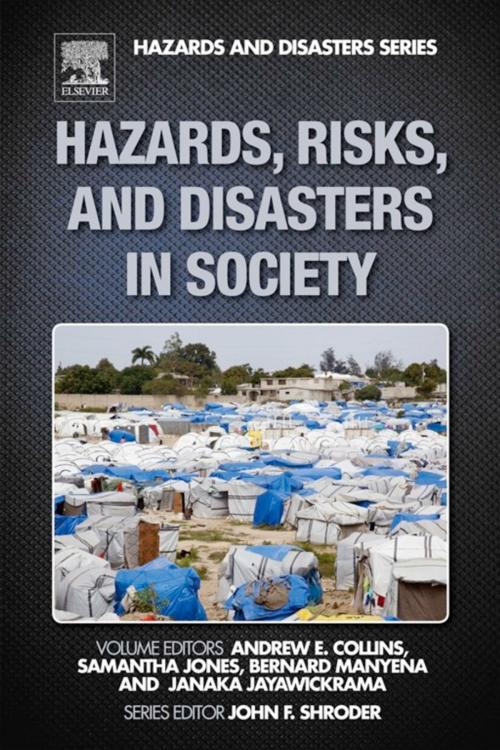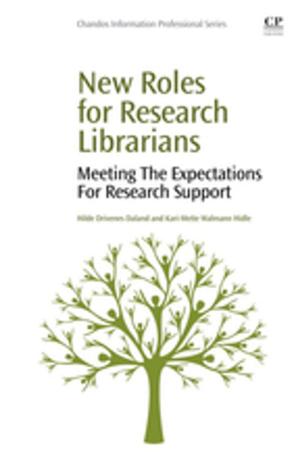Hazards, Risks, and Disasters in Society
Nonfiction, Science & Nature, Nature, Environment, Natural Disasters, Science, Biological Sciences, Environmental Science| Author: | John F. Shroder | ISBN: | 9780123964748 |
| Publisher: | Elsevier Science | Publication: | November 21, 2014 |
| Imprint: | Academic Press | Language: | English |
| Author: | John F. Shroder |
| ISBN: | 9780123964748 |
| Publisher: | Elsevier Science |
| Publication: | November 21, 2014 |
| Imprint: | Academic Press |
| Language: | English |
Hazards, Risks, and Disasters in Society provides analyses of environmentally related catastrophes within society in historical, political and economic contexts. Personal and corporate culture mediates how people may become more vulnerable or resilient to hazard exposure. Societies that strengthen themselves, or are strengthened, mitigate decline and resultant further exposure to what are largely human induced risks of environmental, social and economic degradation. This book outlines why it is important to explore in more depth the relationships between environmental hazards, risk and disasters in society. It presents challenges presented by mainstream and non-mainstream approaches to the human side of disaster studies.
By hazard categories this book includes critical processes and outcomes that significantly disrupt human wellbeing over brief or long time-frames. Whilst hazards, risks and disasters impact society, individuals, groups, institutions and organisations offset the effects by becoming strong, healthy, resilient, caring and creative. Innovations can arise from social organisation in times of crisis. This volume includes much of use to practitioners and policy makers needing to address both prevention and response activities. Notably, as people better engage prevalent hazards and risks they exercise a process that has become known as disaster risk reduction (DRR). In a context of climatic risks this is also indicative of climate change adaptation (CCA). Ultimately it represents the quest for development of sustainable environmental and societal futures. Throughout the book cases studies are derived from the world of hazards risks and disasters in society.
- Includes sections on prevention of and response to hazards, risks and disasters
- Provides case studies of prominent societal challenges of hazards, risks and disasters
- Innovative approaches to dealing with disaster drawing from multiple disciplines and sectors
Hazards, Risks, and Disasters in Society provides analyses of environmentally related catastrophes within society in historical, political and economic contexts. Personal and corporate culture mediates how people may become more vulnerable or resilient to hazard exposure. Societies that strengthen themselves, or are strengthened, mitigate decline and resultant further exposure to what are largely human induced risks of environmental, social and economic degradation. This book outlines why it is important to explore in more depth the relationships between environmental hazards, risk and disasters in society. It presents challenges presented by mainstream and non-mainstream approaches to the human side of disaster studies.
By hazard categories this book includes critical processes and outcomes that significantly disrupt human wellbeing over brief or long time-frames. Whilst hazards, risks and disasters impact society, individuals, groups, institutions and organisations offset the effects by becoming strong, healthy, resilient, caring and creative. Innovations can arise from social organisation in times of crisis. This volume includes much of use to practitioners and policy makers needing to address both prevention and response activities. Notably, as people better engage prevalent hazards and risks they exercise a process that has become known as disaster risk reduction (DRR). In a context of climatic risks this is also indicative of climate change adaptation (CCA). Ultimately it represents the quest for development of sustainable environmental and societal futures. Throughout the book cases studies are derived from the world of hazards risks and disasters in society.
- Includes sections on prevention of and response to hazards, risks and disasters
- Provides case studies of prominent societal challenges of hazards, risks and disasters
- Innovative approaches to dealing with disaster drawing from multiple disciplines and sectors















